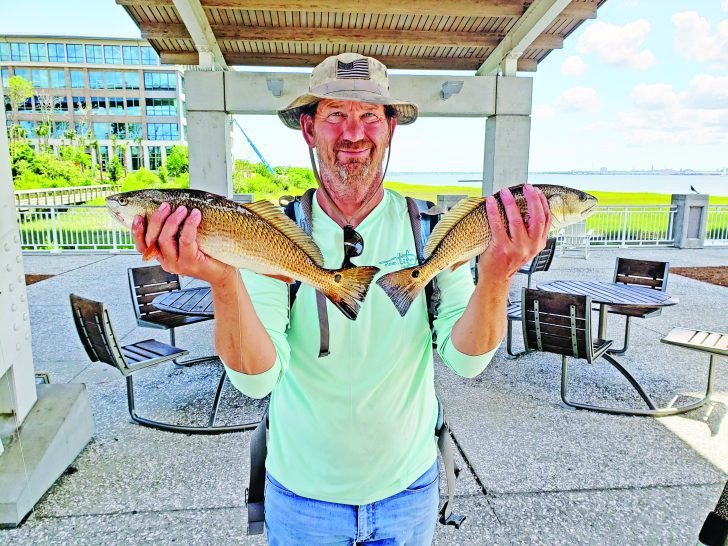It’s been a long stretch for all of us so we’re happy to report that the pier is again open for fishing and the fish seem ready to do their part.
If our first few days being open are any indication of what is to come, we’re in for a great season!
Our first day back we saw multiple slot reds, a 20” flounder, some hungry blue fish, and a few sheepshead.
Typically, in June the harbor temperature reaches 80 degrees and we see even more species show up.
Expect to see whiting, black drum, sea trout, Spanish mackerel and others get in the mix with the reds, flounder, and sheepshead that already showed up.
June is one of those months that should be great for fishermen of all experience levels.
Hopefully after this period of time where we’ve all been inside, we will get to meet some new fishermen ready to enjoy all that pier fishing has to offer.
If you’re just starting out, we want you to get hooked so here are a few things that should help.
You don’t have to spend a lot of money to get started.
You can get an inexpensive rod and reel combo with 10-20-pound test line and tie on a 2-drop rig or Carolina rig and you’re almost ready to go.
One of the biggest mistakes people make around the pier is using hooks that are too big
This setup is commonly used when pier fishing and the rigs can be purchased in the River Watch Café and Gift Shop on the pier.
In order to hold the bottom while fishing you’ll want a 1.5 to 2-ounce weight under most circumstances.
One of the biggest mistakes people make around the pier is using hooks that are too big.
Keep it simple and stick with a size 1, 2, 1/0, or 2/0 hook.
We encourage the use of kahle or circle hooks when possible as these offer a better chance for the safe release of fish that will not be kept.
Now you just need some bait and a daily fishing pass from the shop and you’re ready to fish.
We’ve seen fish caught from one end of the pier to the other
When it comes to bait there many choices and some work better than others on any given day.
Frozen shrimp on a bottom rig is the most common bait and our top seller by far. Who doesn’t like shrimp right?
When putting shrimp on the hook you’ll want to cut or break it into small pieces.

A fishing buddy once said that elephants eat peanuts and there’s definitely truth to that.
Leaving chunks hanging off will entice the pinfish and other baitfish to pick at it and likely stealing your bait without ever taking the hook.
If you want live bait, you’ll want to stop off and visit our friends at Haddrell’s Point Tackle and Supply just a couple miles down the road.
Many of the regulars have their favorite or “lucky” spots, but we’ve seen fish caught from one end of the pier to the other.
If one spot isn’t working after a bit you may want to try a new different one during a different tide.
Some species like trout and flounder, are more prevalent the last 2 hours of the outgoing tide and the first 2 hours of the incoming tide.
Other species, such as red drum and blue fish, seem to be caught during the higher tides especially in locations around the grass line.
The one area to be cautious of until you learn the waters is the very tip of the pier.
There’s 350 cubic yards of old bridge debris right off the end of the pier that has claimed many rigs over the years.
Once you are comfortable with other spots, we’ll be glad to help you learn that one as well.
Normally in June we’d be in full swing with summer long and monthly tournaments.
For now, tournaments are on hold as we all learn new ways to operate. Pier hours are likely to shift a little as we’re adjusting to our new business model.
Check out Charlestoncountyparks.com for the most up to date information regarding tournaments, events, and hours of operation. Welcome back!
Chris Pounder, CPRP Manager
Charleston County Park & Recreation Commission | Mount Pleasant Pier
For more info please contact the pier at (843) 762-9946
or visit www.charlestoncountparks.com
You may also enjoy reading: Are We Losing Our Habitat?





